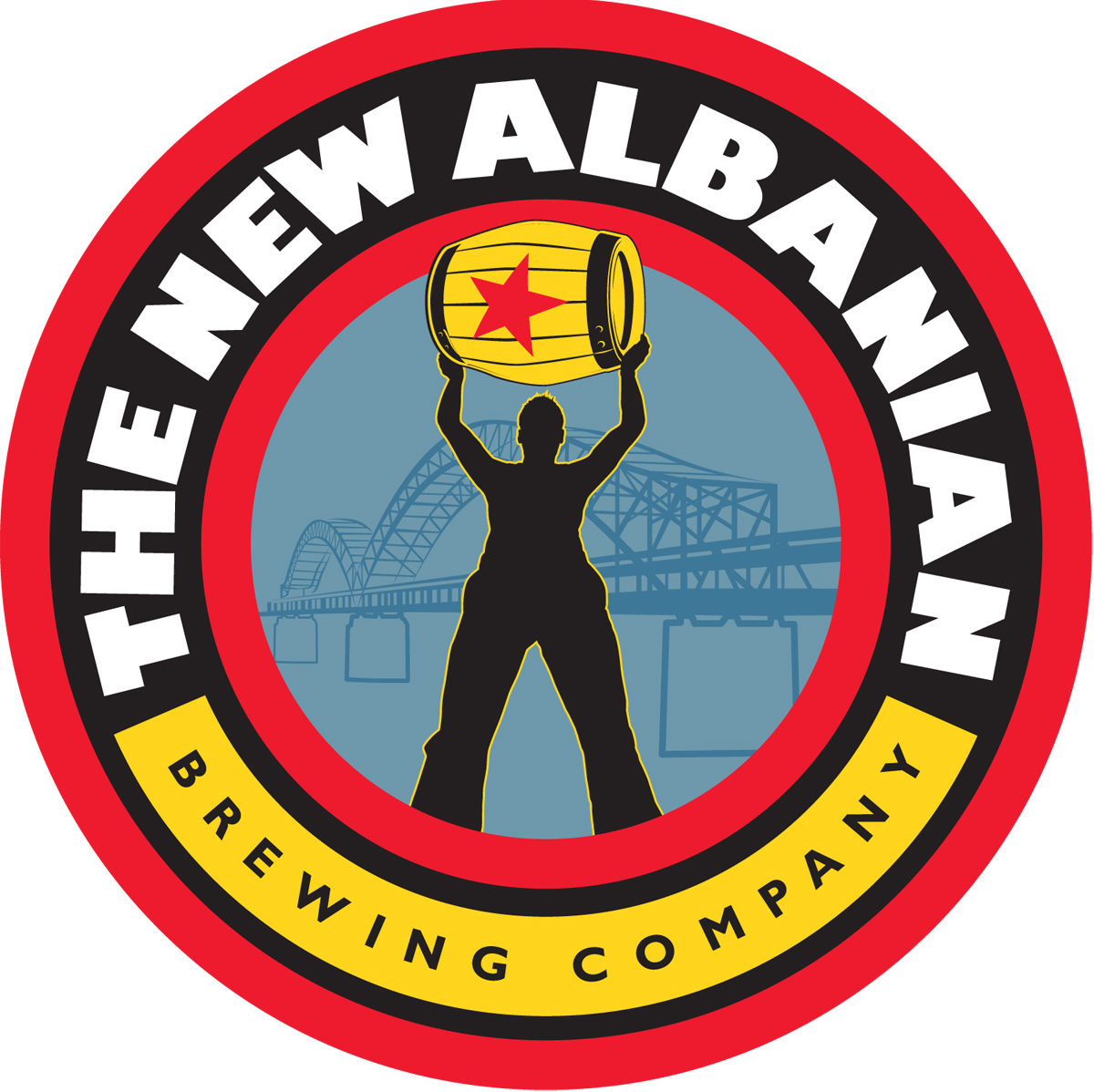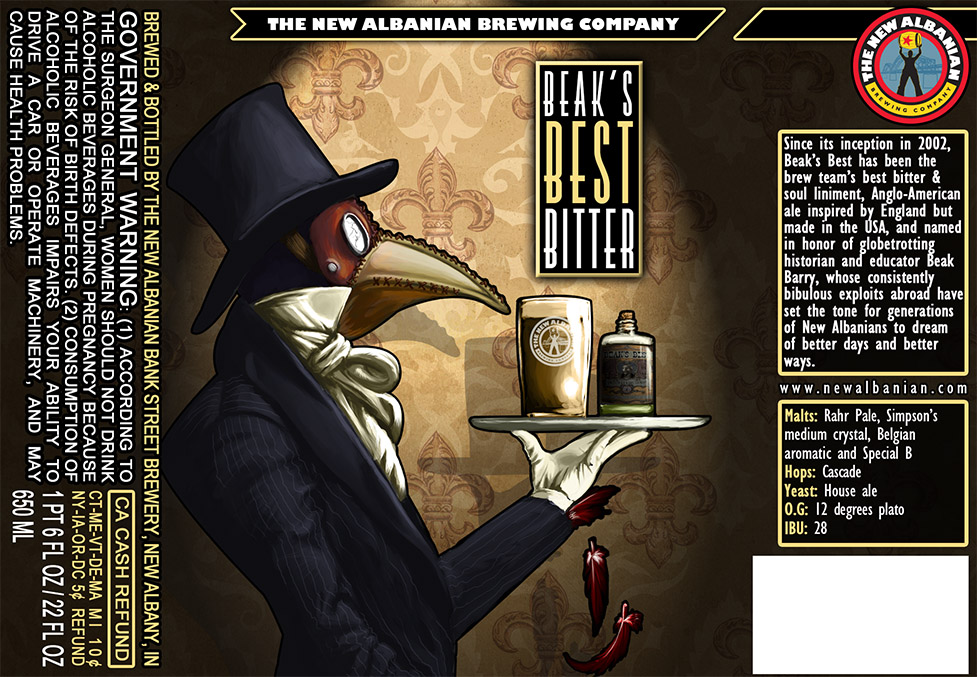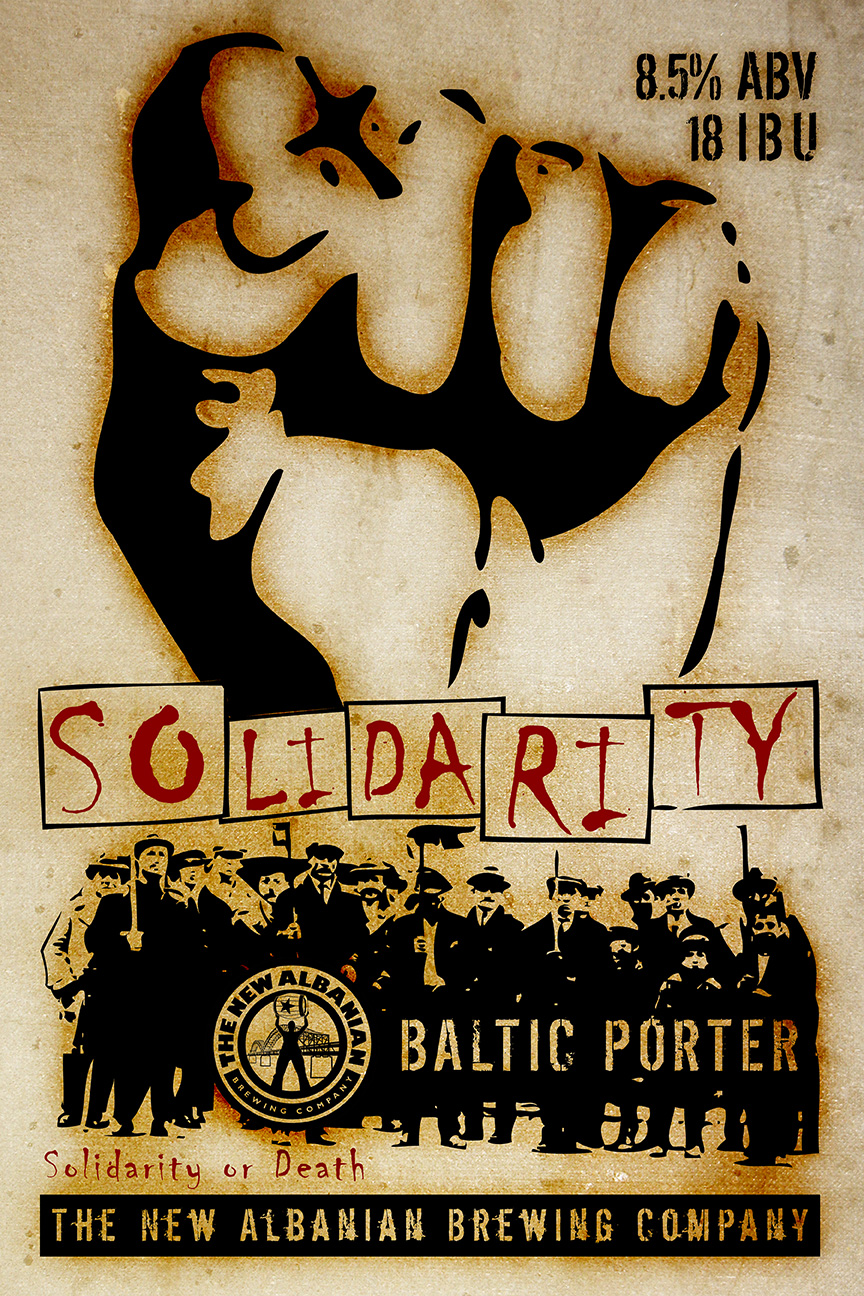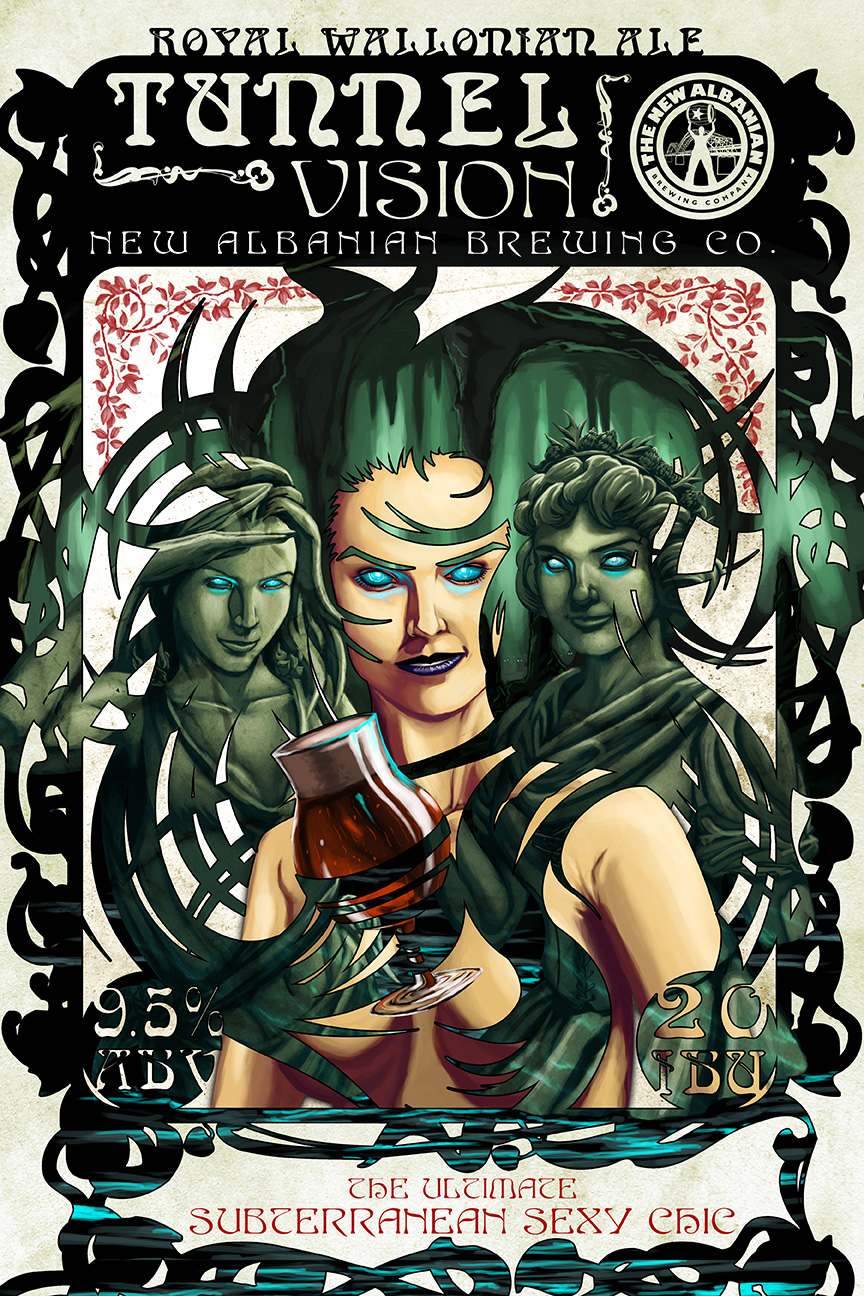Arguably, English ale-making traditions are the least understood of all those passed down to us by our European forbearers, at least during the present, “extreme” phase of America’s better beer revolution.
But smaller can be as good or better, and from the inception of NABC’s brewery in 2002, we’ve sought to honor the English ale ethos with a select few brews. Back in 2002, Beak’s Best was the second batch of beer NABC ever brewed. Community Dark was the first, and Elector came third.
All of them possessed English stylistic antecedents, even if actively encouraged along the way to showcase American attributes borne of their New World creation and residence. It’s nature and nurture; family trees span space and time, both in beer itself and for the people who brew beer.
Then, as now, Beak’s borrows its name from Dr. Donald “Beak” Barry, whose bibulous exploits have set the tone for generations of New Albanians to drink themselves to sleep on their couches. Don, the cousin of NABC co-owner Roger A. Baylor, has been Roger’s mentor through decades of historical studies, European vacations, irreverent political debates and prodigious alcohol consumption in a wide variety of configurations.
Whether at home or abroad, these many lessons have been pivotal in NABC’s evolving view of beer and brewing in the context of drinking locally and thinking globally.
Like all of NABC’s beers, Beak’s has evolved over the years, even if its founding concept has remained quite consistent. Originally, Beak’s was broadly placed in the range of an English-style Extra Special Bitter (ESB), albeit with American hops rather than English. Because our base malt in the early days was Simpsons Golden Promise, we formerly referred to Beak’s as Anglo-American.
Later, as the brewery grew into maturity, it transpired that the malt, hops and yeast used to make Beak’s became entirely American. For a while, we referred to Beak’s as “American Ale,” although in terms of flavor and intent, it remained reminiscent of its English ale lineage.
Now, for 2014, we’re tweaking Beak’s again. The ingredients remain exactly the same, with the only difference being a slight lowering of ABV so that Beak’s now fits snugly into NABC’s Session Beer Series at 4.5%. Hence the pun: Beak’s Best/Best Bitter, because Best Bitter (BJCP 8B) is the style that it most closely approximates.
Draft Beak’s Best Bitter remains a staple at NABC’s two New Albanian locations (served on the hand-pull at Bank Street Brewhouse whenever possible), and is available by the keg through distribution in Indiana (Cavalier) and metropolitan Louisville on the Kentucky side of the Ohio (River City Distributing).
Later in 2014, we’ll be bottling Beak’s and other NABC Session Series ales (Community Dark, Houndmouth & Tafelbier) in 22-oz bombers for carry-out sale ONLY at Bank Street Brewhouse and the Pizzeria & Public House.
—
Beak’s Best Bitter
Best Bitter
ABV: 4.5%
IBU: 35
Color: Copper/ brown.
Flavor: Mid-range maltiness and bitterness with a balanced fruitiness.
Compare to: The same range as Fuller’s London Pride; similar to Rogue Younger’s Special Bitter, with less alcohol.
Description: “American Bitter & Soul Liniment.”
Recipe Suggestion: Ideally, the atmospheric accompaniment to Beak’s is fish and chips, but just about any pub food will do. Beak’s has the bitter edge to cut and complement most fried foods. The Cornish specialty Stargazy pie is a particular favorite of Roger’s, although it’s virtually impossible to find pilchards in the Ohio.
Updated May 2014



